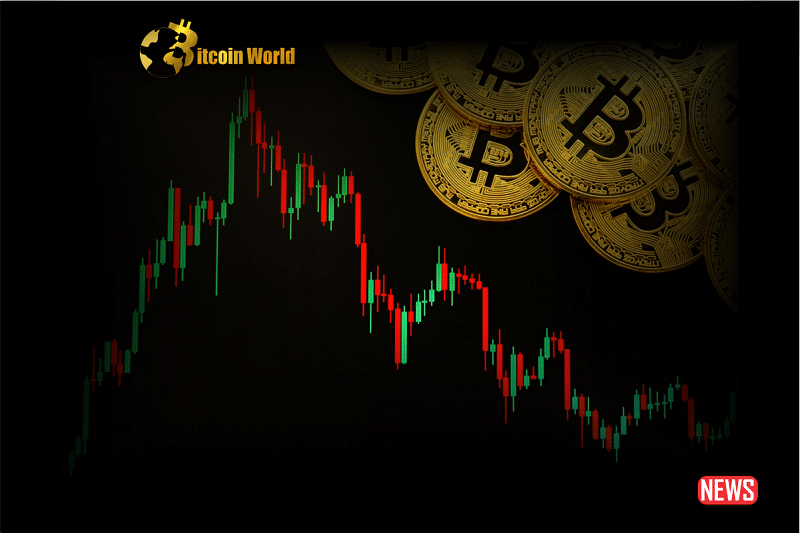Ever feel like the crypto market is speaking in riddles lately? One minute, Bitcoin and Ethereum are flexing their muscles, the next, meme coins are stealing the show. It’s a head-scratcher, right? Trying to pinpoint the driving force behind this season feels like trying to catch smoke. So, what exactly is the narrative defining crypto right now?
The Great Crypto Narrative Debate: Meme Coins, Risk On, or Something Else?
Let’s be honest, the crypto landscape is a bit of a mixed bag. We see glimpses of stability, like Bitcoin and Ethereum making steady gains. But then, out of nowhere, a pack of meme coins surges, leaving everyone wondering what just happened. And then there’s the flight to perceived safety – remember the spike in staked Ether after the Shapella upgrade? Investors were clearly chasing that sweet passive income and betting on deflationary forces to boost prices.
Charmyn Ho, the crypto insights guru at Bybit, hit the nail on the head: there’s no single, dominant story right now. Think about it – the upcoming Ethereum EIP-4844 upgrade is expected to be a boon for Layer 2 solutions like Arbitrum and Optimism, potentially kicking off an “L2 season.” Meanwhile, altcoins seem to be gravitating towards Bitcoin as the yield curve wobbles. But hold your horses before declaring an “altseason” or “memeseason.” Most altcoins are still struggling to climb above their 20-week moving averages. The reality is, capital is still flowing towards the big boys, Bitcoin and Ethereum, leaving many altcoins trailing behind their BTC pairings.
Hong Kong’s Crypto Ambitions: A Spark or a Sizzle?
Remember the buzz about Hong Kong potentially reclaiming its crypto crown? The hope was that new virtual asset rules would reignite the city’s crypto scene, bringing back the glory days. However, the latest draft guidelines from the Securities and Futures Commission (SFC) have tempered expectations. Yes, retail investors in Hong Kong might get to trade crypto, but access won’t be a free-for-all. The SFC is emphasizing strict rules, citing the automated nature of virtual asset trading as a key concern.
What are the hurdles for crypto platforms in Hong Kong?
- Stringent Onboarding: Platforms need robust processes to assess risk tolerance and ensure investors understand the ins and outs of virtual assets.
- Key Personnel Requirements: Think Responsible Officers and Licensed Representatives – these roles need to meet the same standards as those in traditional finance.
- Financial Stability: Exchanges need to maintain a minimum capital amount and submit monthly financial reports to the SFC, echoing the trend of Proof of Reserves for transparency.
- Token Listing Restrictions: A 12-month cooling-off period between a token launch and its listing on a regulated exchange is proposed to curb fraud risks.
- Independent Audits: Smart contracts need to be vetted by independent auditors and tokens should ideally be included in reputable indices.
Interestingly, the SFC hasn’t released a definitive list of which virtual assets will be eligible for retail trading. And here’s a kicker: stablecoins are currently off-limits for retail traders due to regulatory concerns and their potential for runs. This is a point of contention for many in the industry.
Hong Kong vs. Japan: A Tale of Two Regulatory Approaches
It’s fascinating to compare Hong Kong’s approach with other regions. Take Japan, for example. FTX customers in Japan enjoy significantly more flexibility thanks to regulations mandating the use of third-party custodians. This allowed Japanese customers to withdraw both crypto and fiat from FTX Japan – a stark contrast to the situation in Hong Kong, where the lack of a clear regulatory framework for virtual asset custodians creates challenges for supervision and enforcement.
| Feature | Hong Kong (Proposed) | Japan (Existing) |
|---|---|---|
| Retail Crypto Trading | Potentially allowed with strict requirements | Allowed |
| Stablecoin Trading (Retail) | Banned | Allowed (with regulations) |
| Custody Requirements | No specific regulatory regime for custodians | Mandatory use of third-party custodians |
| FTX Customer Withdrawals | Limited due to lack of custodian regulation | Allowed for crypto and fiat |
Navigating the Ambiguity: Key Takeaways
So, what does all this mean for you? In a nutshell, the crypto market is in a state of flux. Here are some key points to keep in mind:
- Flexibility is Key: With no clear dominant narrative, being adaptable to changing market dynamics is crucial.
- Regulatory Watch: Keep a close eye on regulatory developments, as they can significantly impact market access and asset availability (as seen with the Hong Kong example).
- Risk Management: The inherent unpredictability underscores the importance of sound risk management strategies.
- Diversification: Spreading your investments across different asset types can help mitigate risk during periods of uncertainty.
- Stay Informed: Continuously learn and stay updated on market trends, technological advancements, and regulatory changes.
The Road Ahead: Embracing the Crypto Evolution
The absence of a definitive narrative in the current crypto season might feel unsettling, but it’s also a testament to the industry’s dynamic nature. As stakeholders, we need to embrace this ambiguity, adapt to the evolving landscape, and remain vigilant. The crypto story is still being written, and this period of uncertainty is just another chapter in its fascinating evolution.
Disclaimer: The information provided is not trading advice, Bitcoinworld.co.in holds no liability for any investments made based on the information provided on this page. We strongly recommend independent research and/or consultation with a qualified professional before making any investment decisions.


